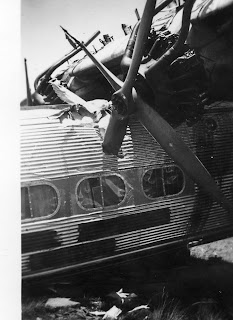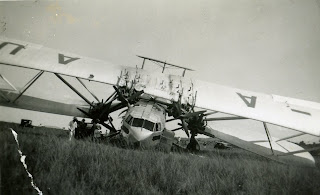RAF Yatesbury was just down the road from Calne in Wiltshire. It has long since been returned to the farmers but I was there on an Air Radar Fitters course. The week ends were spent going back to Portland and getting into trouble for being late returning.
So for a change I accepted an invitation to go to RAF Upavon to visit a Gliding Club. Moonrakers it was called, and the Chief Flying instructor was a certain John Willi (Williamson).
We arrived at about 09:30 on a reasonably sunny Sunday morning, put our names on the flying list and were immediately asked to help wash and polish the wings of this rather nice fiber glass winged, single seater aircraft (Olympia 419 as it turned out). Always a willing helper, so no problem.
Job done.
Gliders were going up and down for rather short flights and everyone seemed to know what was goings on and were very chatty. Then a rather slim, not very tall man stood by a blackboard and had his photo taken. He then got into the machine we had been polishing and was winch launched to about 700 feet, (so i was told) and circling steadily drifted slowly off across the corn fields to the east of the airfield.
I remember hearing someone say "he's too low to get back now". But eventually he drifted away and seemed to get higher before he vanished. Then there was a buzz of activity and a ford van with a trailer drove off the field. When I asked where are they going the answer came back "Berwick-on-Tweed". Looking at the map it seemed that this was about 520 km from Upavon!!! At that moment I decided that this gliding lark must be rather serious and not just a matter of short flights around the airfield.
...to be continued...
This all happened on July 9th 1961...
When it was my turn to fly, the aircraft in which I had my first glider flight was a T31 trainer. Wooden construction with fabric covered wings. The instructor sat in the back seat with me in the front. I had two flights that day totaling eight minutes in all. A winch launch to about 1000 ft a couple of turns and a safe landing.
Later in the day we recieved news of John's flight. It covered some 500+ km but did not actually reach the precise location that he had declared. Impressed I was!
As for my own flying, well.
Two weeks later I was back for the whole of the weekend.
My first "official" training flight was really impressive. Still in a T31, we climbed up to 2600 feet just below the base of the summer cumulus clouds. It was rather exciting to be in this open cockpit thing, and trying to keep it going straight and then turning in the thermals. It felt very strange.
The landing was interesting as we had not air breaks or spoilers, so getting rid of height to land was achieved by "side slipping". I loved it. On the ground again after 20 minutes.
I was lucky that weekend as my next flight was 40 minutes. Lots of rough air and beginning to think that I might eventually get the hang of this flying lark.
The rest of my flights that weekend were short and focused on learning to handle the take off and landings.
Finally by flight number 11 I did the whole circuit from take off to landing. But my reactions were a bit slow coming into land. This was really fun, I actually felt that I was in control now and could not wait for the next weekend to arrive.
And arrive it did. The 29/30 July.
So far my log book shows that I had had 12 flights including the initial introduction "joy rides" as they are labeled.
Put my name down on the flying list as soon as I arrived at the airfield and was then busy helping to get the aircraft out of the hangar and lined up for light. They were checked to ensure that nothing was loose or damaged, and the controls all worked as they should. The days flying began.
My flying this weekend began with a flight in a new aircraft, for me. A T21. This is a wonderful high winged two seater, where the instructor and student sit side by side. The T21 can fly very slowly and is good for learning about stalls etc. My instructor for the day, as it turned out was John Willi the CFI (Chief Flying Instructor) I had five flights in all, mostly short but one of 21 minutes.
One thing that struck me about the Moonraker flying club was the discipline and the focus on safety. The aircraft had to be properly parked with the upwind wing always weighted down with a tyre. Any flying that was remotely dangerous was discussed and we all learned from that.


